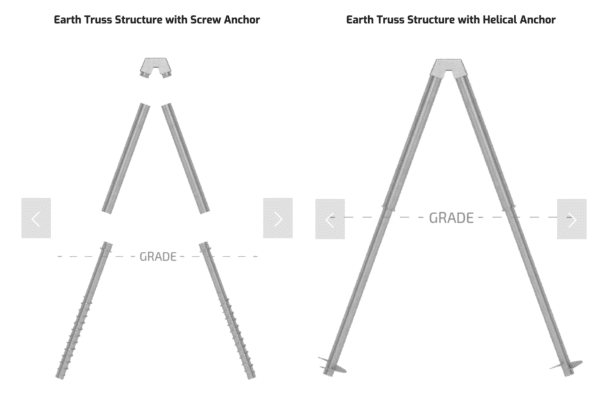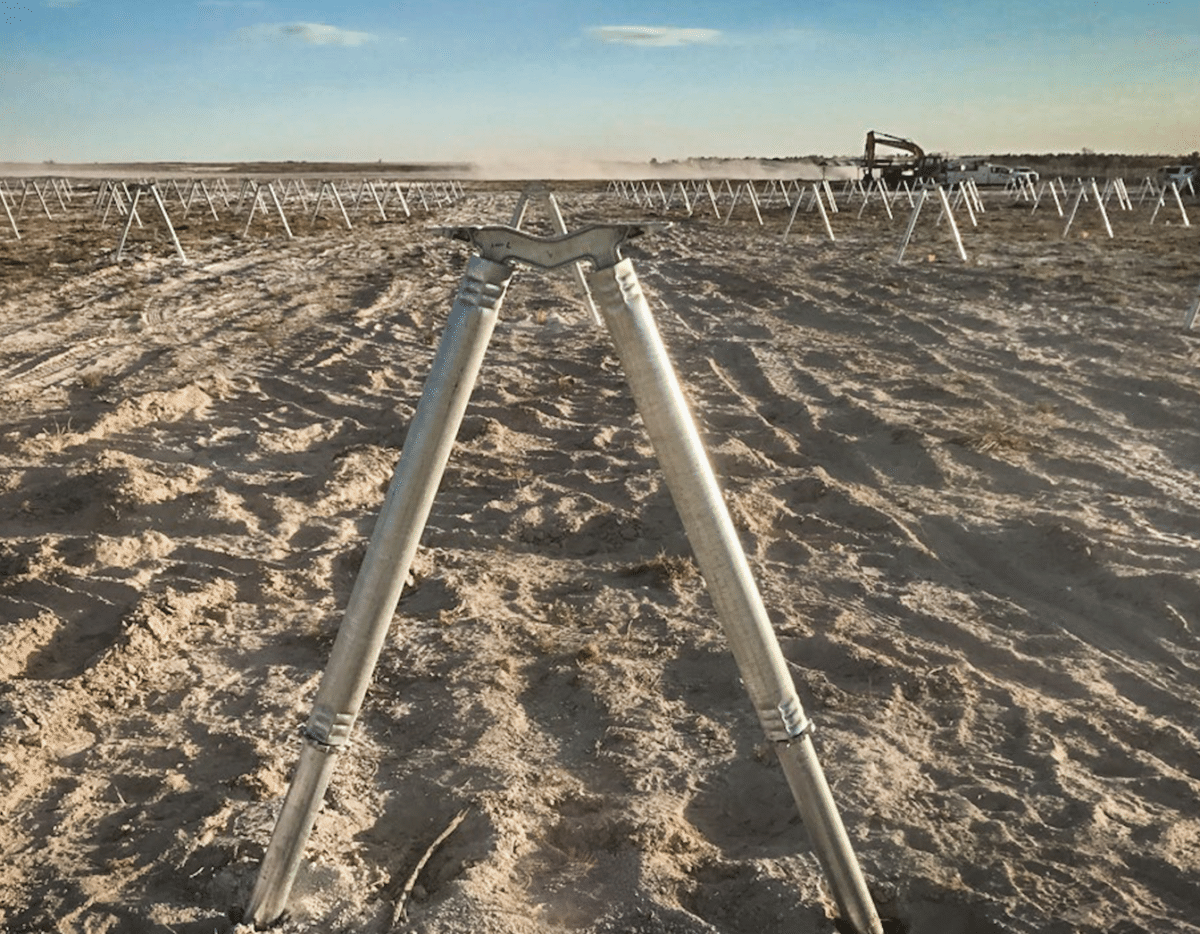Jack West had a dream about utility-scale solar tracker foundations and soon after “$15 million showed up in a bank account.”
Dream manifestation of this nature works best if you’ve sold your previous solar mounting system startup, Zep, to SolarCity for $158 million, as West did in 2013. He clarified that the new venture funding came from Cthulhu and Zep investors in “a relatively easy raise.”
West’s newest firm, Ojjo was founded to provide “a new way to approach solar foundation design,” with a truss system claimed to use half the tariff-rich steel of a conventional installation.
Co-founded by West and Daniel Flanigan, Ojjo is helmed by CEO Helena Kimball, most recently the VP of marketing at big-league utility-scale developer 8minute Solar.
From residential PV to utility-scale
What does a residential solar hardware expert know about utility-scale solar? It turns out that, prior to being purchased by Tesla, West was developing trackers for SolarCity — but Tesla/Elon Musk dropped the project after the acquisition, according to the founder.
“No one was working on foundations. And whenever I see no one working on a problem, I see an opportunity,” he added.
The company notes on its website, “Solar foundations using driven piles are not optimized for solar-specific load conditions, so they require a lot more material than necessary. Ojjo’s Earth Truss system offers a more efficient use of material because the loads are resisted by the strong axes of the structure”
Ojjo’s truss is comprised of underground anchors, above ground legs, and a truss cap. The underground portion can have screw threads or helical flights, depending on the soil.

The construction video makes the installation process clear. A hardened steel tool drills or hammers into the earth through the center of the hollow screw anchor. The process is highly automated and minimizes embedment depth, which reduces sub-surface risk.
West notes that “sub-surface risk is a big problem in the industry. Money gets thrown at the risk — EPCs have to create a huge chunk in their budget for drilling.”
The CEO points out that, “the best land has been developed,” and now utility-scale solar in West Texas, for example, is being built on gypsum, which Kimball likens to “hard cement. She said, “Soil conditions are getting tougher, but get the foundation right and the rest of the project goes smoothly.”
Big solar back in style
As pv magazine relentlessly covers — massive solar projects in the U.S. — Ojjo’s target, are back in style. These large solar projects are no longer driven by RPS edicts or government loan programs — but by corporate clean energy buyers, utility offtakers and the sheer competitive pricing of solar (or solar-plus-storage) compared to other generation sources.
There’s a proliferation of 100-MW-plus projects now in development in unexpected places such as Pennsylvania, Mississippi and Arkansas. Texas is swarming with developers developing gigawatts of large-scale solar — and the number of commissioned projects is going to balloon this year and next.
6-gigawatt project pipeline
Ojjo was founded two years ago and began its first project installs a year ago with “projects now in the ground,” according to Kimball who said the startup is “sold out” for the remainder of the year. The company boasts a 6-gigawatt project pipeline.
Kimball notes that an Ojjo system can save up to $0.02 per watt in a commoditized market where EPCs and developers are interested in every shard of cost savings.
Kimball added, “We are tracker agnostic. We partner with leading tracker vendors,” and emphasized that this is a high-growth market with a generation source that can compete against conventional fuels.
She’s seeing “really exciting projects coming in on a regular basis” and is being “careful about finding the right partners.”
There’s still about 30 GW of new utility-scale solar contracted in the U.S., according to Wood Mackenzie. The analyst firm suggests that even with a a 26% shortfall from its forecast, “2020 would be the biggest year for utility solar.”
“We’re at that scaling moment,” said Kimball.
This content is protected by copyright and may not be reused. If you want to cooperate with us and would like to reuse some of our content, please contact: editors@pv-magazine.com.







By submitting this form you agree to pv magazine using your data for the purposes of publishing your comment.
Your personal data will only be disclosed or otherwise transmitted to third parties for the purposes of spam filtering or if this is necessary for technical maintenance of the website. Any other transfer to third parties will not take place unless this is justified on the basis of applicable data protection regulations or if pv magazine is legally obliged to do so.
You may revoke this consent at any time with effect for the future, in which case your personal data will be deleted immediately. Otherwise, your data will be deleted if pv magazine has processed your request or the purpose of data storage is fulfilled.
Further information on data privacy can be found in our Data Protection Policy.